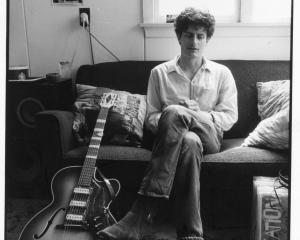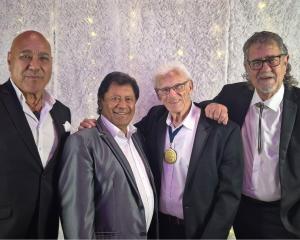"You know, Michael," Jones told Michael Jackson, "I just did it."
Jones (61) has always been determined to keep living her life.
Speaking by phone, she is witty, forthright and gracious, a model of diva-like decorum.
But if time and experience have gentled her image as a buzz-cut pop dominatrix, Jones still strives to maintain her independent spirit.
"I just go with the flow, I follow the yellow brick road," she said in her buoyant Caribbean accent.
"I don't know where it's going to lead me, but I follow it."
Jones might not register the exoticism that she did in the early 1980s, but she obviously didn't just drop in from Kansas, either.
After keeping a relatively low profile for several years, Jones lately has been reasserting herself in public, including as part of a Massive Attack-led concert in London last year.
Last November she released Hurricane, her first studio album in nearly two decades.
Reviewing a recent show in London, a critic for the Independent newspaper wrote that "With her stylised vocals, other-worldly appearance and well-muscled haunches, she is breathtaking: a true entertainer in every sense."
Performing live, Jones said, "is what I do best," and she's happy to be a slave to the rhythm again.
"I just perform 100%, I don't know how to cheat, I don't know how to hold back."
Jones gives audiences an eyeful with her stage show, flaunting a variety of ensembles, including a profusion of custom-made headgear.
Stylishness has been one of Jones' calling cards since she broke into the New York club scene, after her statuesque looks marked her for a modelling career.
"I was skinny as a rail and had high cheekbones and a very interesting face - or so I was told."
It was an odd turn of fate for a woman who'd been raised in a family so formal that as a girl she'd been forced to keep most body parts, even her knees, covered.
Few of her early fans might have guessed that Jones' couture savvy was heavily influenced by her mother, an expert seamstress who used to copy patterns by Givenchy and Yves Saint Laurent.
Her mother was also an accomplished Pentecostal singer, with a voice that her daughter describes as "like going through the eye of a needle".
"That's a voice. It turned out I had deep throat," Jones said, adding a rumbly contralto laugh.
"I had to train it to get higher."
She now works with a professional opera coach.
"I never thought I was going to be a singer. That was an accident," she said.
"I remember doing an audition for a recording; my voice just trembled and fell apart."
But she persisted, benefiting from her own songwriting skills and her shrewd choice in producers, such as Trevor Horn and Nile Rodgers, and musician collaborators such as reggae rhythm-section masters bassist Robbie Shakespeare and drummer Sly Dunbar.
Guided by her then-paramour, photographer/art director Jean-Paul Goude, Jones also developed a series of striking public personae.
During the late 1970s and early '80s, she refashioned herself from a disco queen, being squired around Studio 54 by Andy Warhol, into an edgier, more androgynous figure, which she later capitalised on with film roles in Conan the Destroyer (1984) and the 1985 Bond movie, A View to a Kill.
She also evolved musically as disco yielded to New Wave, merging reggae beats and darker undercurrents with uptempo electro-pop.
No stranger to seizing the moment, Jones believes fear often keeps people from living their lives fully and openly.
"I like to think of myself as a positive person. Otherwise I wouldn't have had a child," she said.
Citing a song from the new album, Sunset Sunrise, which alludes to a cycle of renewal shared by all people, she added: "I do believe that. It will get better. It has to get better."
- Reed Johnson of the Los Angeles Times-Washongton Post











